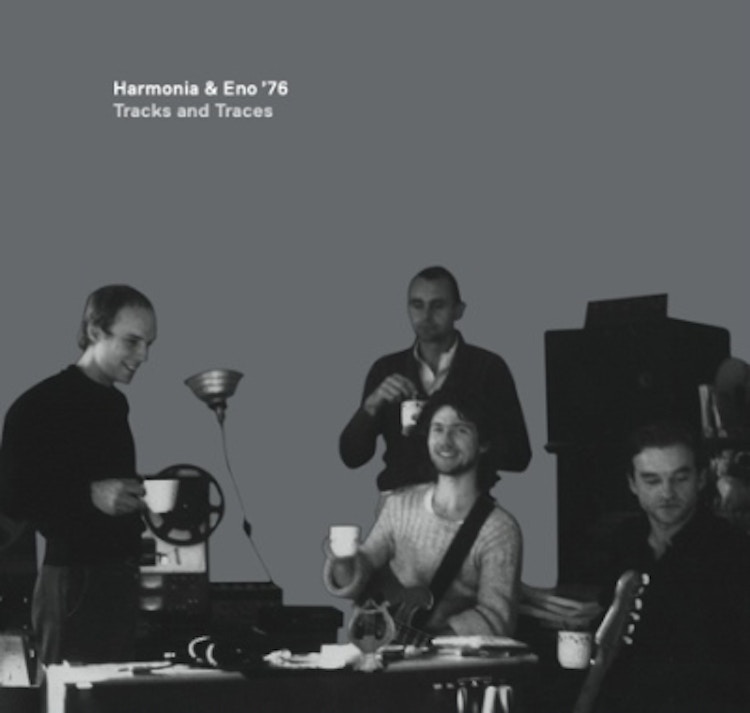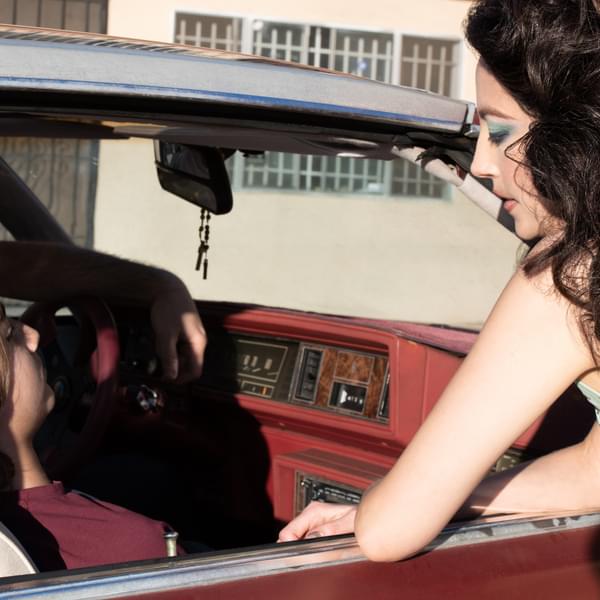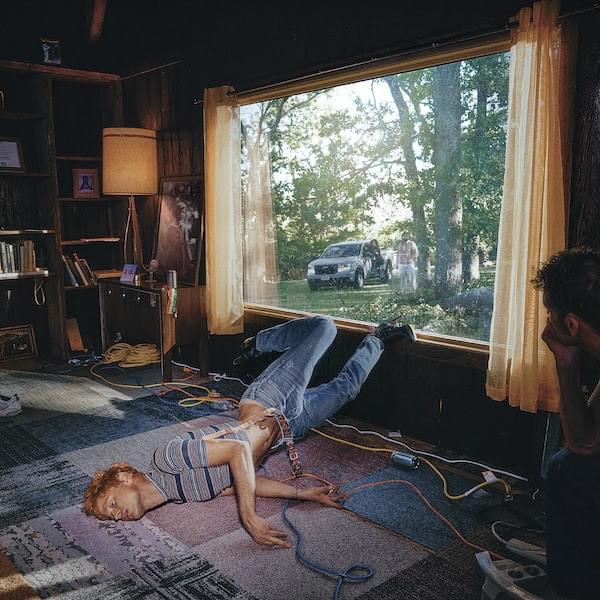Harmonia '76 – Tracks and Traces
"Tracks and Traces"

24 September 2009, 11:00
| Written by Matt Poacher
 Just staring at the four names of the musicians involved in Harmonia '76 - Dieter Moebius, Hans-Joachim Roedelius, Michael Rother and Brian Eno - is enough to summon an entire inner soundworld; and when you look at the constellation of albums that were released featuring these musicians, in and around the Harmonia '76 recording session, there is something almost illicit and disturbing at the thought of the crackle and hum of mental and physical processes that must have been at work in the brief studio time they spent together: Deluxe, Neu! 75 and Another Green World in 1975, Sowiesoso in 1976, Flammende Herzen and Before and After Science in 1977, not to mention Eno’s studio work with Bowie (he was on his way to work on Low when the first Harmonia '76 session was arranged). So it is, as stupid as it sounds, that by merely being very good, and not a full blown mystical experience, Tracks and Traces is somehow ”“ however minor ”“ a bit of a disappointment.There are of course mitigating circumstances. The main one would be that these were only ever supposed to be studio sessions, and weren’t actually released officially until 1997 when Rykodisc in the States picked up the recordings after Roedelius had remastered them (they are re-released here with an extra three tracks). Harmonia had officially split after releasing Deluxe in 1975 and had only really considered reforming after the chance to jam and record with Eno had arisen (he allegedly called the band members asking ‘is now a good time for that recording session?’ He received the answer, ‘well, not exactly ”“ we kind of broke up ”“ but sure, as good a time as any.’). As such, Tracks and Traces does have rough edges, and is full of exploratory ideas that don’t always go anywhere. But when it’s explorations of this quality”¦The other central factor here is harder to pin down, and concerns the directions the various band members were starting to take in their various other projects. As Cluster, Moebius and Roedelius, were moving towards a kind of new mode of bucolic ambience. Sowiesoso, recorded after these sessions, had a brighter edge than anything the duo had released before, an almost contented quietude; Rother in his work with Klaus Dinger in Neu had similarly moved towards a more inner-pastoral mode ”“ in direct contrast to Dinger’s harsher motorik explorations. And Eno? Well Eno had recently released Another Green World, and at least with his solo work, had set something in motion that was to occupy him for a good portion of the next 30 years.So what you have with Tracks and Traces is both a document of an uneasy communal recording session (admittedly this is a bit of a leap of faith on my behalf), and a document of transition, but considering the personnel involved, it was always bound to be some document. All that tension, all the bubbling creative clamour - it’s all there in the opening track of the original sessions, ‘Vamos Campaneros’: it’s built around a particularly filthy Rother riff, a thing of dirt and grime, and underpinned by a what sounds like a snare drum split into a thousand pieces. The track isn’t so much propulsive as fractured and damaged; and despite several other moments of ominous tone and portent (‘Luneberg Heath’, sections of ‘Sometimes in Autumn’) it’s not a sound the collective return to. It’s certainly gives the lie to Eno’s (apocryphal?) statement that Harmonia were the most important rock band in the world.‘By the Riverside’, the second track of the original release, is much better indicator of the overall sound of Tracks and Traces ”“ languid, bathed in washes of light, punctuated with near buried birdsong; and that title: pastoral, accepting, passive. ‘Luneberg Heath’ which follows is something of a red herring, as despite its nature theme it’s actually quite unsettling and bleak; it’s also the only track to feature vocals, with Eno intoing, blankly, ‘don’t get lost on Luneberg Heath’ over a woozy Rother guitar line. It gives way to ‘Sometimes in Autumn’ (the sessions were recorded in September ’76) the album’s sonic and thematic centrepiece ”“ a 15-minute voyage out that amply signals the directions all members were seemingly taking at the time. It begins with pulsing synths riding an undertow of oscillators and sounds so current you could be listening to Fennesz or Keith Fullerton Whitman. When Rother’s haunted guitar appears, it sends the oscillators spinning wildly - almost to the point of sonic invisibility - and takes the track elsewhere, back to that impassive state. It isn’t until a great underthrum of organ drones at around the 10 minute mark that the track resolves itself, a resolution of quiet beauty.The album seems to tail off somewhat from ‘Sometimes in Autumn’ with more of the unfinished sketches taking centre stage ”“ the Tortoise-like ‘When Shade Was Born’ the dripping, lush ‘Almost’, ‘Les Demoiselles’ with its Lanois-esque slide guitar ”“ but it is always engaging and beautiful, and there is always that sense of shock that this is 33 years old. And as a glimpse into the recording processes and creative lives of four such influential figures, and as a measure of what had gone before and what was to come (certainly with Eno who, with Another Green World, had already embarked on a still head-spinning purple patch) it’s a more than worthy release.
Just staring at the four names of the musicians involved in Harmonia '76 - Dieter Moebius, Hans-Joachim Roedelius, Michael Rother and Brian Eno - is enough to summon an entire inner soundworld; and when you look at the constellation of albums that were released featuring these musicians, in and around the Harmonia '76 recording session, there is something almost illicit and disturbing at the thought of the crackle and hum of mental and physical processes that must have been at work in the brief studio time they spent together: Deluxe, Neu! 75 and Another Green World in 1975, Sowiesoso in 1976, Flammende Herzen and Before and After Science in 1977, not to mention Eno’s studio work with Bowie (he was on his way to work on Low when the first Harmonia '76 session was arranged). So it is, as stupid as it sounds, that by merely being very good, and not a full blown mystical experience, Tracks and Traces is somehow ”“ however minor ”“ a bit of a disappointment.There are of course mitigating circumstances. The main one would be that these were only ever supposed to be studio sessions, and weren’t actually released officially until 1997 when Rykodisc in the States picked up the recordings after Roedelius had remastered them (they are re-released here with an extra three tracks). Harmonia had officially split after releasing Deluxe in 1975 and had only really considered reforming after the chance to jam and record with Eno had arisen (he allegedly called the band members asking ‘is now a good time for that recording session?’ He received the answer, ‘well, not exactly ”“ we kind of broke up ”“ but sure, as good a time as any.’). As such, Tracks and Traces does have rough edges, and is full of exploratory ideas that don’t always go anywhere. But when it’s explorations of this quality”¦The other central factor here is harder to pin down, and concerns the directions the various band members were starting to take in their various other projects. As Cluster, Moebius and Roedelius, were moving towards a kind of new mode of bucolic ambience. Sowiesoso, recorded after these sessions, had a brighter edge than anything the duo had released before, an almost contented quietude; Rother in his work with Klaus Dinger in Neu had similarly moved towards a more inner-pastoral mode ”“ in direct contrast to Dinger’s harsher motorik explorations. And Eno? Well Eno had recently released Another Green World, and at least with his solo work, had set something in motion that was to occupy him for a good portion of the next 30 years.So what you have with Tracks and Traces is both a document of an uneasy communal recording session (admittedly this is a bit of a leap of faith on my behalf), and a document of transition, but considering the personnel involved, it was always bound to be some document. All that tension, all the bubbling creative clamour - it’s all there in the opening track of the original sessions, ‘Vamos Campaneros’: it’s built around a particularly filthy Rother riff, a thing of dirt and grime, and underpinned by a what sounds like a snare drum split into a thousand pieces. The track isn’t so much propulsive as fractured and damaged; and despite several other moments of ominous tone and portent (‘Luneberg Heath’, sections of ‘Sometimes in Autumn’) it’s not a sound the collective return to. It’s certainly gives the lie to Eno’s (apocryphal?) statement that Harmonia were the most important rock band in the world.‘By the Riverside’, the second track of the original release, is much better indicator of the overall sound of Tracks and Traces ”“ languid, bathed in washes of light, punctuated with near buried birdsong; and that title: pastoral, accepting, passive. ‘Luneberg Heath’ which follows is something of a red herring, as despite its nature theme it’s actually quite unsettling and bleak; it’s also the only track to feature vocals, with Eno intoing, blankly, ‘don’t get lost on Luneberg Heath’ over a woozy Rother guitar line. It gives way to ‘Sometimes in Autumn’ (the sessions were recorded in September ’76) the album’s sonic and thematic centrepiece ”“ a 15-minute voyage out that amply signals the directions all members were seemingly taking at the time. It begins with pulsing synths riding an undertow of oscillators and sounds so current you could be listening to Fennesz or Keith Fullerton Whitman. When Rother’s haunted guitar appears, it sends the oscillators spinning wildly - almost to the point of sonic invisibility - and takes the track elsewhere, back to that impassive state. It isn’t until a great underthrum of organ drones at around the 10 minute mark that the track resolves itself, a resolution of quiet beauty.The album seems to tail off somewhat from ‘Sometimes in Autumn’ with more of the unfinished sketches taking centre stage ”“ the Tortoise-like ‘When Shade Was Born’ the dripping, lush ‘Almost’, ‘Les Demoiselles’ with its Lanois-esque slide guitar ”“ but it is always engaging and beautiful, and there is always that sense of shock that this is 33 years old. And as a glimpse into the recording processes and creative lives of four such influential figures, and as a measure of what had gone before and what was to come (certainly with Eno who, with Another Green World, had already embarked on a still head-spinning purple patch) it’s a more than worthy release.
Get the Best Fit take on the week in music direct to your inbox every Friday
Read next
Listen
Flavours' "Ground Up" is an intoxicatingly groovy bouquet
Bedridden’s "Philadelphia Got Me Through" feels like stepping into a mosh pit of angry gymnasts
Burgeoning indie-pop group late night drive home explore the dangers of the internet in “terabyte”
Escapist alt-pop auteur Erin LeCount presents her latest labyrinthine track "Marble Arch"
Waiting for Smith's "I Like Life" is a sun-soaked gambol
Sink into a blistering shoegaze soundscape with green star’s latest track “four-o-five”
Reviews

Great Grandpa
Patience, Moonbeam
26 Mar 2025

Deafheaven
Lonely People With Power
26 Mar 2025

Perfume Genius
Glory
26 Mar 2025

IDER
Late to the World
18 Mar 2025




